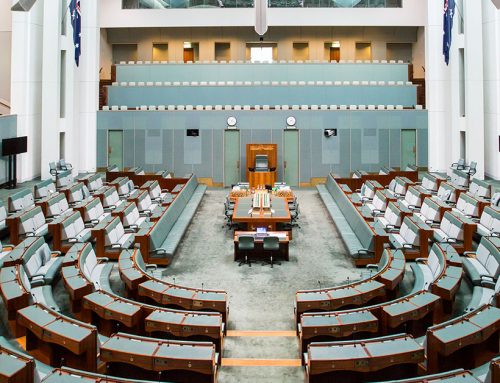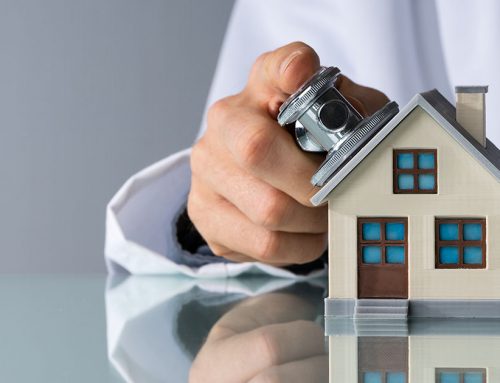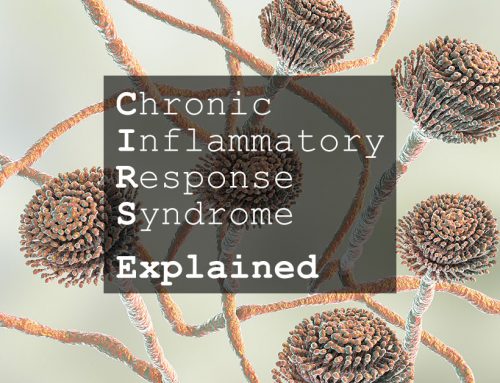Renting
Aus (General)ACTVICNSWQLDSATASWANTNZ
- Cordato, A. (2019, February 1). Mould in rental properties – tenant’s rights and landlord’s responsibilities. Lexology. Retrieved March 16, 2019 from ref.
- Ioannou, D. (n.d.). Rental apartments and mould: a common story. Maurice blackburn lawyers. Retrieved May 8, 2018 from ref.
- Kesteven, S. (2018, August 15). Living with mould: The ‘tightrope walk’ between landlords and tenants. ABC Radio National. Retrieved Feb 17, 2021 from ref
- Kollmorgen, A. (2020, March 9). Black mould and renters’ rights. Choice. Retrieved Feb 17, 2021 from ref
- ACAT
- ACT Civil & Administrative Tribunal (ACAT)
- ACT Civil & Administrative Tribunal. (2019, June 10). Outcomes in rental property disputes at ACAT. [Microsoft Word File, 36kb]. Retrieved February 21, 2021 from link.
- Residential Tenancies Amendment Act 2018 (2018)
- All changes in place from March 2021. (2020, October 1). Consumer Affairs Victoria. Retrieved Feb 17, 2021 from ref
- Expanded definition for urgent repairs
Urgent repairs now include repairs or replacements relating to air conditioning, safety devices and any fault or damage which makes the property unsafe or insecure, including pest infestations, or mould or damp caused by or related to the building structure.
- Expanded definition for urgent repairs
- All changes in place from March 2021. (2020, October 1). Consumer Affairs Victoria. Retrieved Feb 17, 2021 from ref
- Residential Tenancies Regulations 2021 (S.R. No. 3/2021)
- 16 Information which residential rental provider must disclose to rental applicant (p11)
2 (c) On and from 31 December 2021, if the residential rental provider has received a repair notice, in the last 3 years, relating to mould or damp in the premises caused by or related to the building structure; - Schedule 4 – Rental minimum standards
8 Mould and dampness (p181)
Each room in the rented premises must be free from mould and damp caused by or related to the building structure. - 13 Ventilation (p184)
(1) If the rented premises is a Class 1 building, each habitable room, bathroom, shower room, toilet and laundry must have ventilation satisfying Performance Requirement P2.4.5 of the BCA Volume Two, or the Acceptable Construction Practice in Part 3.8.5 of the BCA Volume Two.
(2) If the rented premises is within a Class 2 building, each habitable room, bathroom, shower room, toilet and laundry must have ventilation satisfying Performance Requirements FP4.3, FP4.4 and FP4.5 of the BCA Volume One, or the Deemed-to-Satisfy Provisions requirements in F4.5, F4.6 and F4.7 of the BCA Volume One.
- 16 Information which residential rental provider must disclose to rental applicant (p11)
- Consumer affairs Victoria (Mould in a rented home., 2021)
- Who is responsible for treating mould may depend on whether:
- the tenant contributed to the problem. For example, if the tenant has allowed mould to develop in a bathroom by not using ventilation fans, the landlord may serve the tenant with a notice requiring them to fix the problem.
- a problem with the property has allowed the mould to develop. For example, if a defective window frame has allowed rainwater to leak into the property, causing mould, the landlord must deal with this as a non-urgent repair.
- Mould is common after floods or heavy rain. Tenants should advise their landlord or agent immediately if they see signs of mould, using the Notice to landlord of rented premises.
- If the mould is causing a danger to health this may be considered an urgent repair, because the mould is causing the property to be unsafe.
- Tenants will need to support their request for urgent repairs by providing proof that the mould is dangerous and/or causing a health issue. Examples include:
- an assessment report by an occupational hygienist or environmental health professional. Some local councils are also able to provide these assessments
- a medical report, if the tenant has an existing health issue such as asthma.
- Who is responsible for treating mould may depend on whether:
- VCAT
- If a landlord and tenant cannot agree on who is responsible for treating mould, either party can apply for a determination from Victorian Civil and Administrative Tribunal (VCAT).
- Tenancy bodies/services
- Residential Tenancies Act 2010 (11 Dec 2020) / Residential Tenancies Regulation 2010
- Minimum standards: The Act states that a landlord must provide and maintain the residential premises in a reasonable state of repair, having regard to the age, life and rent payable for the premises (s 63). There are no prescribed minimum standards in the Act, nor is ‘reasonable state’ defined.
- NSW Fair Trading (Health, safety and security in a rental property, n.d.)
- Adequate ventilation is one of the minimum standards that properties must meet to be considered fit to live in. Who is responsible depends on how the mould developed. For example:
- if mould developed from a build-up of moisture because the landlord failed to repair a defective window in a reasonable time, or the property didn’t have adequate ventilation – then the landlord is responsible and must fix the problem
- if the mould developed during the tenancy because the tenants allowed a build-up of moisture by never opening any windows or not using ventilation fans in the bathroom – then the tenant may be responsible.
- Timing is also a factor. If mould develops close to the start of the tenancy, it could be considered pre-existing damage. The condition report contains a dedicated section on mould, and landlords, agents or tenants should note the mould when they complete the report.
- Even if mould is noted on the condition report, landlords must make sure they keep the property in a reasonable state of repair.
- Tenants must notify the landlord or agent as soon as possible if they see any signs of mould or damp developing during the tenancy.
- Adequate ventilation is one of the minimum standards that properties must meet to be considered fit to live in. Who is responsible depends on how the mould developed. For example:
- Escalation
- Residential Tenancies and Rooming Accommodation Act 2008 (1 Sept 2019) / Residential Tenancies and Rooming Accommodation Regulation 2009
- Minimum standards: The Act makes provision for a prescribed minimum housing standard to be prescribed by a regulation (s 17A). The minimum standard prescribed could relate to, for example:
- sanitation, drainage, cleanliness and repair of the premises;
- ventilation and insulation;
- protection from damp and its effects;
- construction, condition, structures, safety and situation of the premises;
- freedom from vermin infestation; and
- energy efficiency (s 17A(3)).
- The Act also lists the lessor’s obligations at the start of the tenancy, which are to ensure that the premises are: clean; fit for the tenant to live in; and in good repair. The lessor must also ensure that no health and safety laws have been breached and that the premises comply with any prescribed minimum housing standards (s 185(2)).
- Minimum standards: The Act makes provision for a prescribed minimum housing standard to be prescribed by a regulation (s 17A). The minimum standard prescribed could relate to, for example:
- Residential Tenancies Authority (Mould, n.d.)
- Deciding who is responsible for cleaning mould depends on how it appeared in the first place.
- The tenant should notify the property manager/owner as soon as they are aware of a mould issue.
- Generally, if the mould is a result of problems with the property (e.g. a leaking roof) it is the property manager/owner’s responsibility to clean the mould and make any necessary repairs.
- Some buildings may be more prone to mould due to factors such as the age of the building, structural issues, location, or the absence of adequate ventilation or extractor fans. The property manager/owner is more likely to be responsible for mould in these circumstances.
- If the tenant causes the mould they are responsible for cleaning it and paying for any damage caused.
- QCAT
- Queensland Civil and Administrative Tribunal (QCAT)
- The maximum amount of money that can be claimed in QCAT’s minor civil
dispute jurisdiction will be $25,000.
- Other tenancy bodies/services
- Residential Tenancies Act 1995 (v1.7.2020) / Residential Tenancies Regulations 2010
- Minimum standards: Division 7 of the Act details the landlord’s obligations in regard to condition of the premises, and states that the landlord must ensure that the premises are in a ‘reasonable’ state of cleanliness and repair (ss 67–68). There are no prescribed minimum standards in the Act, nor is ‘reasonable state’ defined.
- Government of South Australia (ref)
- The landlord must meet all conditions in the lease agreement as well as:
- provide the property in a clean and reasonable state at the start of the tenancy
- The tenant must meet all conditions in the lease agreement as well as:
- keep the property reasonably clean and free from health and fire hazards
- The landlord must meet all conditions in the lease agreement as well as:
- SACAT
- Residential Tenancy Act 1997 (17 Nov 2020) / Residential Tenancy Regulations 2015
- Minimum standards: Part 3B of the Act prescribes minimum standards for premises, which include, among others, that the premises must:
- be weatherproof and structurally sound;
- be clean and in good repair;
- have a flushable toilet, in a room that contains a vent or opening window;
- have a bathroom with a bath or shower, and a washbasin;
- have a functioning kitchen sink, stovetop (with a prescribed number of heating elements) and oven;
- have a functioning electricity and heating supply;
- have window coverings for privacy; and
- have adequate ventilation (ss 36I–36O)
- Minimum standards: Part 3B of the Act prescribes minimum standards for premises, which include, among others, that the premises must:
- Residential Tenancies Act 1987 (10 Jul 2020) / Residential Tenancies Regulations 1989
- Minimum standards: The Act states that the lessor ‘must deliver up to the tenant vacant possession of the premises in a reasonable state of cleanliness and a reasonable state of repair having regard to its age and character’ (s 42(2)); no minimum standards are prescribed in the Act, nor is ‘reasonable state’ defined.
- SAT
- Residential Tenancies Act 1999 (1 Jan 2021)/ Residential Tenancies Regulations 2000
- Minimum standards: The Act states that premises under a tenancy agreement must be: habitable, clean, secure, and meet all relevant health and safety requirements (ss 47–49). There are no prescribed minimum standards in the Act.
- Minimum standards: The Act states that premises under a tenancy agreement must be: habitable, clean, secure, and meet all relevant health and safety requirements (ss 47–49). There are no prescribed minimum standards in the Act.
- Moisture ingress and drainage standard (ref)
- All private rentals must comply within 90 days of any new or renewed tenancy after 1 July 2021, with all private rentals complying by 1 July 2024.
- Rental properties must have efficient drainage for the removal of storm water, surface water and ground water, including an appropriate outfall. The drainage system must include gutters, downpipes and drains for the removal of water from the roof.
- If the rental property has an enclosed subfloor, a ground moisture barrier must be installed if it is reasonably practicable to do so.
- Ventilation standard (ref)
- All private rentals must comply within 90 days of any new or renewed tenancy after 1 July 2021, with all private rentals complying by 1 July 2024.
- All habitable rooms in a rental property must have at least one window, door or skylight which opens to the outside and can be fixed in the open position. In each room, the size of the openable windows, doors and skylights together must be at least 5% of the floor area of that room.
- Each window door, window or skylight must be openable and must be able to remain fixed in an open position.
- All kitchens and bathrooms must have an extractor fan vented to the outside.
- Kitchens – In any room with a cooktop, new fans or rangehoods installed after 1 July 2019 must have a minimum diameter (including ducting) of 150mm or an exhaust capacity of at least 50 litres per second.
- Bathrooms – In any room with a shower or bath, new fans installed after 1 July 2019 must have a minimum diameter (including ducting) of 120mm or an exhaust capacity of at least 25 litres per second.
- Fans put in before 1 July 2019 must ventilate to the outside of the house and be in good working order, but they don’t have to meet the requirements listed above.
Construction Defects, Buying and Selling
AusNZ
- Cott, P. (2021, February 8). The Law Surrounding Mould in Buildings. Retrieved Feb 17, 2021 from https://sourceable.net/the-law-surrounding-mould-in-buildings
- Lovegrove, K. (2020, Mary 11). Leaky buildings and toxic mould. Lovegrove and cotton – construction and planning lawyers. Retrieved Feb 17, 2021 from http://lclawyers.com.au/leaky-buildings-and-toxic-mould/




